Have You Been Told You’re Not a Candidate for LASIK?
Dreaming of a life without reliance on glasses or contact lenses can be disheartening if you’ve been told that LASIK is not a good option for you. However, your journey towards enhanced vision doesn’t end with LASIK! Although LASIK is popular, numerous other clinically-validated LASIK alternatives exist that can help liberate you from corrective eyewear and provide you with the crisp, clear vision you deserve.
If you have tough vision problems like a high prescription, astigmatism, or reliance on reading glasses – don’t be discouraged. At Kugler Vision, our award-winning experts can help. As the first team in Omaha to specialize in all seven vision correction procedures – we have customized solutions to treat even tough vision problems so you can experience life glasses and contacts free.
LASIK Alternatives
At Kugler Vision, we are the first practice in Nebraska or Iowa to offer all seven modern vision correction procedures available to reduce patients’ dependence on glasses and contact lenses. Based on your unique requirements and objectives, one of the following vision correction procedures might be the ideal solution for you:
EVO ICL
EVO ICL is an Implantable Collamer Lens that brings several advantages, particularly for those ineligible for LASIK due to severe myopia (nearsightedness), thin corneas, or chronic dry eye. EVO ICL doesn’t lead to dry eye symptoms and provides UV protection. While the EVO procedure is newly approved in the U.S., more than 2 million EVO ICL procedures have been performed worldwide, with 99.4% of patients surveyed saying they would have the EVO Lens procedure again.
The implantation of EVO ICL is performed within the cornea just in front of the eye’s natural lens and takes about 20 to 30 minutes. Patients typically experience almost instant vision improvement and minimal recovery time. Once installed, the lens is imperceptible and cannot be seen or felt. Unlike LASIK, which permanently alters the surface of the cornea, EVO ICL adds to your eye’s natural structure and can be removed in the future if necessary. Suitable candidates for EVO ICL are between the ages of 21 and 45 who have mild to severe myopia (with prescriptions ranging from –3D to –20D) and stable prescriptions for at least a year.
PRK (Photo-Refractive Keratectomy)
PRK is another form of laser vision correction that involves removing the outer surface layer of the eye instead of making an incision in the cornea. A laser is then employed to reshape the cornea to correct refractive errors. Although visual improvement and recovery time might be slightly longer than LASIK or EVO ICL, PRK remains a viable option for many, particularly those with thin corneas. It is suitable for correcting up to -12 D of nearsightedness. Candidates for PRK should be over 18 and have had a stable prescription for at least a year.
Refractive Lens Exchange
Refractive Lens Exchange involves replacing the eye’s natural lens with an artificial intraocular lens (IOL) to correct vision and address the early stages of Dysfunctional Lens Syndrome. The RLE procedure not only corrects your glasses prescription, but it also improves vision quality by removing the yellowing, distorted lens. This process is akin to cataract surgery and is generally conducted one eye at a time, tailored to correct various vision errors depending on the IOL used. Refractive Lens Exchange is most commonly performed on patients in their 40s and 50s.
SMILE (Small Incision Lenticule Extraction)
Small Incision Lenticule Extraction (SMILE), commonly known as keyhole LASIK, is a proven vision correction procedure designed to treat the most common refractive error: nearsightedness (myopia).
The SMILE procedure involves using a femtosecond laser to create a corneal lenticule, which is extracted through a small keyhole. If you undergo a SMILE procedure, both eyes are typically done at the same time. SMILE only takes a few minutes from start to finish, and the part of the procedure that uses a laser to reshape your cornea lasts only about 30 seconds. SMILE patients achieve results similar to those of LASIK, with excellent reported outcomes.
Kugler Vision was the first vision center in Nebraska or Iowa to perform SMILE. Today, SMILE has helped thousands of people achieve freedom from glasses and contacts. Lance Kugler, MD is among more than 1,000 surgeons who have performed over 7 million SMILE procedures worldwide. We are proud to offer this proven, gentle, and effective vision correction solution at Kugler Vision.
Laser Cataract Surgery
As your eyes mature, they undergo vision changes because of the natural lens continuing to harden and yellow, which is the early stage of cataracts. Everyone is affected because it’s a natural part of the aging process. The changes are slow and can often go unnoticed for years. If you are in your 50s or older, advanced laser cataract surgery may be the best option for you.
With traditional cataract surgery, the initial steps of cataract surgery are performed manually. This includes the initial incisions, the capsulotomy, and phacoemulsification (the breaking up of the cloudy cataract in preparation for removal). With laser-assisted cataract surgery, these steps have become automated and performed with a computer-guided precision laser. The result is faster treatment, more predictability, and more precision – all of which lead to improved outcomes for patients.
Selecting the Appropriate Vision Correction Surgery
Choosing the right vision correction surgery involves various factors, including your prescription, lifestyle, and desired benefits. The experienced ophthalmologists at Kugler Vision can help outline your options and help craft a treatment plan that best suits your needs.
To learn more about your options, schedule an appointment at Kugler Vision today!



